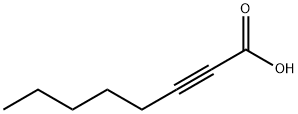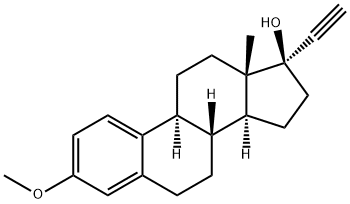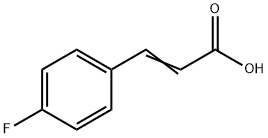1-BUTYNE
Synonym(s):Ethylacetylene
- CAS NO.:107-00-6
- Empirical Formula: C4H6
- Molecular Weight: 54.09
- MDL number: MFCD00039944
- EINECS: 203-451-3
- SAFETY DATA SHEET (SDS)
- Update Date: 2024-12-18 14:08:52

What is 1-BUTYNE?
Description
Ethyl acetylene is a colorless, compressed gasor liquid. Molecular weight = 54.0; Boiling point = 8.1℃;Freezing/Melting point = -130℃; Flash point = -7℃.Hazard Identification (based on NFPA-704 M RatingSystem): Health 1, Flammability 4, Reactivity 2. Insolublein water.
Chemical properties
Available as liquefied gas.Insoluble in water.
Chemical properties
1-Butyne is a clear, colorless gas with a characteristic acetylenic odor. It is an extremely flammable and reactive alkyune and may cause frostbite. It is insoluble in water. It is a specialty gas mixture used in organic synthesis of compounds and instrument calibration; it has no specifi c or signifi cant industrial application. On combustion, 1-butyne releases carbon monoxide.
Chemical properties
Ethyl acetylene is a colorless, compressed gas or liquid.
The Uses of 1-BUTYNE
Specialty fuel, chemical intermediate.
Definition
ChEBI: A terminal acetylenic compound that is butane carrying a triple bond at position 1.
General Description
A colorless gas. Denser than air. Prolonged exposure to intense heat may cause the containers to rupture violently and rocket.
Air & Water Reactions
Highly flammable.
Reactivity Profile
ETHYL ACETYLENE may react vigorously with strong oxidizing agents. May react exothermically with reducing agents to release hydrogen gas. In the presence of various catalysts (such as acids) or initiators, may undergo exothermic polymerization.
Hazard
Flammable, dangerous fire risk.
Health Hazard
Vapors may cause dizziness or asphyxiation without warning. Some may be toxic if inhaled at high concentrations. Contact with gas or liquefied gas may cause burns, severe injury and/or frostbite. Fire may produce irritating and/or toxic gases.
Health Hazard
1-Butyne probably has some anesthetic activity and can act as a simple asphyxiant. The symptoms of poisoning include rapid respiration, muscular incoordination, fatigue, dizzi ness, nausea, vomiting, unconsciousness, and death. The toxicity of 1-butyne has not been thoroughly investigated and the published information is very scanty
Fire Hazard
EXTREMELY FLAMMABLE. Will be easily ignited by heat, sparks or flames. Will form explosive mixtures with air. Silane will ignite spontaneously in air. May polymerize explosively when heated or involved in a fire. Vapors from liquefied gas are initially heavier than air and spread along ground. Vapors may travel to source of ignition and flash back. Cylinders exposed to fire may vent and release flammable gas through pressure relief devices. Containers may explode when heated. Ruptured cylinders may rocket.
Safety Profile
Probably an asphpant. A very dangerous fire hazard when exposed to heat, open flame, or powerful oxidzers. A dangerous explosion hazard. To fight fire, stop flow of gas. See also ACETYLENE and ACETYLENE COMPOUNDS.
Potential Exposure
A simple asphyxiant. Ethyl acetylene is used as a fuel and as a chemical intermediate.
First aid
If this chemical gets into the eyes, remove anycontact lenses at once and irrigate immediately for at least15 min, occasionally lifting upper and lower lids. Seek medical attention immediately. If this chemical contacts theskin, remove contaminated clothing and wash immediatelywith soap and water. Seek medical attention immediately. Ifthis chemical has been inhaled, remove from exposure,begin rescue breathing (using universal precautions, including resuscitation mask) if breathing has stopped and CPR ifheart action has stopped. Transfer promptly to a medicalfacility. When this chemical has been swallowed, get medical attention. Give large quantities of water and inducevomiting. Do not make an unconscious person vomit. Iffrostbite has occurred, seek medical attention immediately;do NOT rub the affected areas or flush them with water. Inorder to prevent further tissue damage, do NOT attempt toremove frozen clothing from frostbitten areas. If frostbitehas NOT occurred, immediately and thoroughly wash contaminated skin with soap and water.
storage
Cylinders of 1-butyne should be stored in well-ventilated areas, away from heat, flame, and sparks and with proper valve protection caps on the cylinders when not in use. Non-refi llable cylinders must be disposed of in accordance with federal, state, and local regulations.
Shipping
UN2452 Ethylacetylene, stabilized, Hazard Class: 2.1; Labels: 2.1-Flammable gas. Cylinders must be transported in a secure upright position, in a well-ventilated truck. Protect cylinder and labels from physical damage. The owner of the compressed gas cylinder is the only entity allowed by federal law (49CFR) to transport and refill them. It is a violation of transportation regulations to refill compressed gas cylinders without the express written permission of the owner
Incompatibilities
Extremely flammable; forms explosive mixture with air. Incompatible with oxidizers (chlorates, nitrates, peroxides, permanganates, perchlorates, chlorine, bromine, fluorine, etc.); contact may cause fires or explosions. Keep away from alkaline materials, strong bases, strong acids, oxoacids, epoxides, copper and its alloys, and various plastics including Teflon. May undergo violent polymerization when subjected to heat, direct sunlight, or contamination
Waste Disposal
Return refillable compressed gas cylinders to supplier
Precautions
Occupational workers should be very careful during handling/using 1-butyne cylinders, which may rupture under fi re conditions, thereby forming an explosive mixture in air. Also, the vapors of 1-butyne may travel a considerable distance to the source of ignition and fl ash back. Workers should secure the cylinder when using to protect them from fall ing and a suitable hand truck should be used to move the cylinders. The workplace should have adequate general and local exhaust ventilation to maintain concentrations below flammable limits and to avoid asphyxiation. Workers should have proper protective gloves and safety shoes to prevent contact with cold equipment. Workers should be cautious to protect 1-butyne containers from physical damage, avoid defacing the cylinders or labels, and the cylinders should be refi lled by qualifi ed producers of compressed gas.
Properties of 1-BUTYNE
| Melting point: | -126°C |
| Boiling point: | 8°C |
| Density | 0.678 |
| refractive index | 1.3962 |
| storage temp. | 2-8°C |
| Water Solubility | 2.87g/L(25 ºC) |
| CAS DataBase Reference | 107-00-6(CAS DataBase Reference) |
| EPA Substance Registry System | 1-Butyne (107-00-6) |
Safety information for 1-BUTYNE
| Signal word | Danger |
| Pictogram(s) |
 Flame Flammables GHS02  Gas Cylinder Compressed Gases GHS04 |
| GHS Hazard Statements |
H220:Flammable gases H280:Gases under pressure |
| Precautionary Statement Codes |
P210:Keep away from heat/sparks/open flames/hot surfaces. — No smoking. P377:Leaking gas fire: Do not extinguish, unless leak can be stopped safely. P381:Eliminate all ignition sources if safe to do so. P410+P403:Protect from sunlight. Store in a well-ventilated place. |
Computed Descriptors for 1-BUTYNE
| InChIKey | KDKYADYSIPSCCQ-UHFFFAOYSA-N |
1-BUTYNE manufacturer
Vadilal Chemicals Limited
New Products
Tert-butyl bis(2-chloroethyl)carbamate 4-Methylphenylacetic acid N-Boc-D-alaninol N-BOC-D/L-ALANINOL N-octanoyl benzotriazole 3-Morpholino-1-(4-nitrophenyl)-5,6-dihydropyridin- 2(1H)-one Furan-2,5-Dicarboxylic Acid DIETHYL AMINOMALONATE HYDROCHLORIDE 1,1’-CARBONYLDIIMIDAZOLE R-2-BENZYLOXY PROPIONIC ACID 1,1’-CARBONYLDI (1,2-4 TRIAZOLE) N-METHYL INDAZOLE-3-CARBOXYLIC ACID (2-Hydroxyphenyl)acetonitrile 4-Bromopyrazole 5-BROMO-2CYANO PYRIDINE 5,6-Dimethoxyindanone 5-broMo-2-chloro-N-cyclopentylpyriMidin-4-aMine 2-(Cyanocyclohexyl)acetic acid 4-methoxy-3,5-dinitropyridine 1-(4-(aminomethyl)benzyl)urea hydrochloride 2-aminopropyl benzoate hydrochloride diethyl 2-(2-((tertbutoxycarbonyl)amino) ethyl)malonate tert-butyl 4- (ureidomethyl)benzylcarbamate Ethyl-2-chloro((4-methoxyphenyl)hydrazono)acetateRelated products of tetrahydrofuran








You may like
-
 107-00-6 Ethyl acetylene 98%View Details
107-00-6 Ethyl acetylene 98%View Details
107-00-6 -
 1975-50-4 98%View Details
1975-50-4 98%View Details
1975-50-4 -
 2-HYDROXY BENZYL ALCOHOL 98%View Details
2-HYDROXY BENZYL ALCOHOL 98%View Details
90-01-7 -
 2-Chloro-1,3-Bis(Dimethylamino)Trimethinium Hexafluorophosphate 221615-75-4 98%View Details
2-Chloro-1,3-Bis(Dimethylamino)Trimethinium Hexafluorophosphate 221615-75-4 98%View Details
221615-75-4 -
 61397-56-6 CIS BROMO BENZOATE 98%View Details
61397-56-6 CIS BROMO BENZOATE 98%View Details
61397-56-6 -
 14714-50-2 (2-Hydroxyphenyl)acetonitrile 98+View Details
14714-50-2 (2-Hydroxyphenyl)acetonitrile 98+View Details
14714-50-2 -
 118753-70-1 98+View Details
118753-70-1 98+View Details
118753-70-1 -
 733039-20-8 5-broMo-2-chloro-N-cyclopentylpyriMidin-4-aMine 98+View Details
733039-20-8 5-broMo-2-chloro-N-cyclopentylpyriMidin-4-aMine 98+View Details
733039-20-8